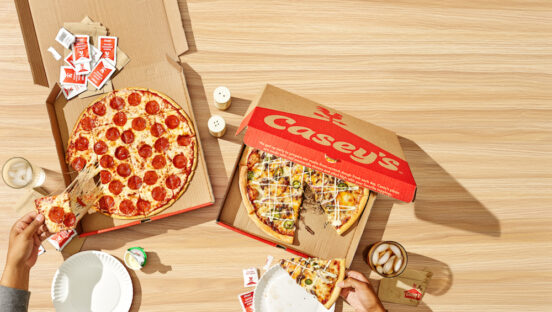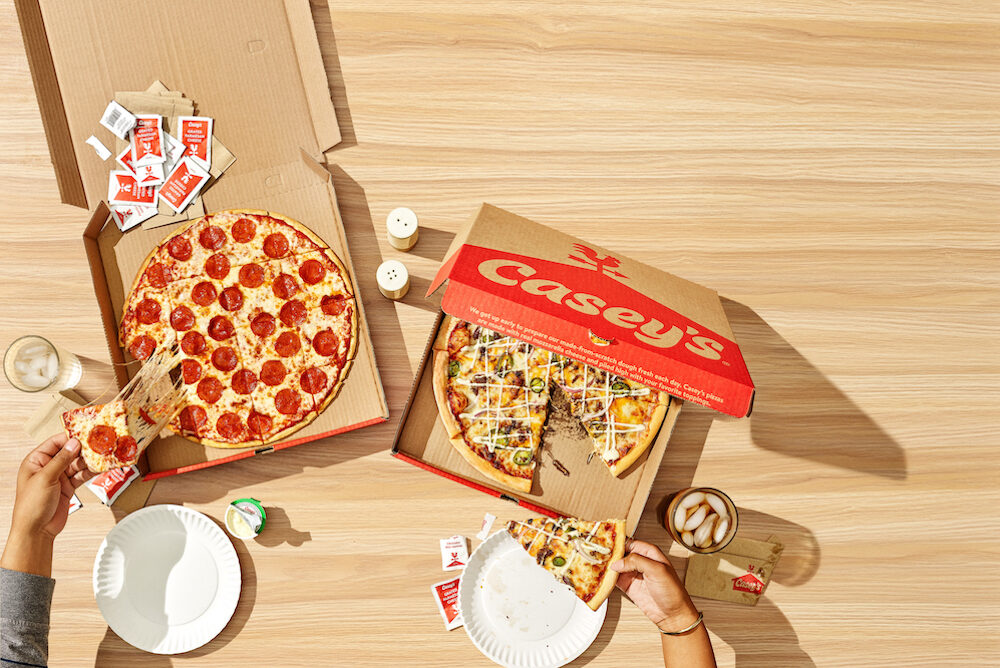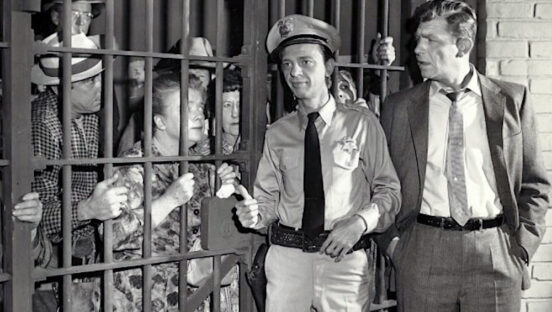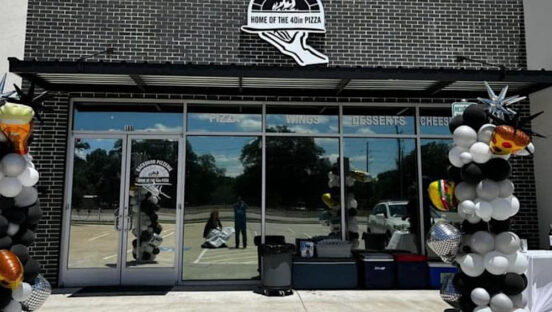Featured in the Pizza Power Report 2024:
-
- Pizza Power Report 2024: Are We Living in a Golden Age of Pizza?
- How the Leading Chains Are Using AI to Sell More Pizza
- Old-School Operators Make Peace with Robots
- Watch Your Back, Papa Johns! Top Pizza Chains Clash for Supremacy
- Loyalty Programs: Why Points-for-Pizza Is Not Good Enough
- Why Gas Station Pizza Is Your Next Big Competitor
- Culture Is Key to Attracting High-Performing Young Workers
- The 25 Most Critically Acclaimed Pizzerias in the U.S.
- The 25 Most Popular Pizzerias in the U.S.
- Ranking the Top 10 U.S. Pizza Brands by Units and Sales
- Which Pizza Chains Are Dominating the Internet?
- Which Independent Pizzerias Are Dominating the Internet?
Click here to download the full 2024 Pizza Power Report.
By Kevin McIntyre
Large pizza chains aren’t the only competition independent pizzerias and smaller chains have to worry about these days. As convenience store (C-store) operators continue to build up their own foodservice programs, the pizza parlor and the gas station are beginning to share more and more similarities.
C-stores are expanding their foodservice menus and devoting more time to crafting offerings that customers will enjoy. And, when it comes to a crowd-pleasing meal, there’s no better option than pizza.
C-store pizza is changing, however, and it may surprise the unaware consumer, not to mention pizzeria operators who have to compete against it. Gas station pizza is no longer the “last resort”; rather, it’s something many consumers seek out and plan their meals around.
Pizza-focused C-store operators have made it a point in recent years to compete with traditional quick-service restaurants by offering many of the same foodservice options, including seating for guests and active customer service. 7-Eleven, for example, aims to compete through authenticity and innovation. “At 7-Eleven, our pizza was inspired by the classics—New York City’s Brooklyn pizza, pizzeria pizza and all the greats,” says Kiara McKinney, who leads the 7-Eleven public relations account at Edible Inc. In addition to a take-and-bake option, she says, “We offer fresh pizza both whole and by the slice.”
Related: It’s not delivery – it’s a DiGiorno pizza vending machine

Casey’s sells 30 million pizzas a year, including specialty items like breakfast pizzas. Photo courtesy Casey’s.
7-Eleven features staples like cheese and pepperoni pies but also has introduced specialties like Extreme Meat and a Breakfast Pizza, as well as a variety of LTOs. “We love to experiment with new flavors for our customers to try. Over the last year, we have introduced Spicy Meat Pizza, Breakfast Pizza and Veggie pizza, to name a few,” McKinney says. “We also do a number of pizza-related promotions.”
And get this: 7-Eleven even offers third-party delivery and online ordering via the 7NOW app.
And while Marco’s Pizza aims to move from the No. 5 spot among top pizza chains to No. 4 by dislodging Papa Johns, Casey’s, with its 2,500-plus locations, claims that it’s the fifth largest pizza chain in the country. Casey’s goes through 30 million pies in a year, a staggering number for a brand that offers a full array of foodservice options. The chain even recently secured the copyright for the phrase, “The Official Pizza and Beer Headquarters.”
To make its pizzas broadly appealing, Casey’s brings in field trainers to its lab to connect with store operators and determine the product’s direction. Then the product is finely tuned, tested with at least 150 guests, and, after any needed tweaks, rolled out to Casey’s stores.
To change perceptions about C-store pizza, Casey’s wants more people to try its food, which is easier said than done. So Casey’s introduces unique LTOs and new menu items to drive customer engagement and loyalty. Additionally, it leverages a unique advantage it has over some other QSRs: the ability to sell alcohol with pizza.
At Break Time C-stores, management decided that a co-branded partnership was the best way to launch its pizza program, providing instant brand recognition and brand support. For example, MFA Oil Co. operates more than 70 Break Time stores across Missouri, with the majority of stores offering Hunt Brothers Pizza for customers.
Oh, and that reminds us: Hunt Brothers Pizza currently operates 9,000 locations across 30 states. C-store pizza, it seems, is everywhere, which means pizzeria operators need to start thinking of convenience stores as viable competitors.














